Research Areas
Today’s wireless systems are a far cry from the voice-centric communication systems developed in the first generation. Nowadays, wireless communication finds applications in various facets of our society including education, trade, banking, healthcare, transportation, military, industrial automation, and so on. In order to meet the diverse quality-of-service (QoS) requirements of these varying use cases, there is an ever-growing need for novel wireless technologies. At CoSiNC, we are interested in developing advanced signal processing techniques at the physical (PHY) and medium access (MAC) layer, and cross-layer design/optimization for networking adaptivity and QoS control. Some of the research areas that we are currently pursuing are listed below:
1. Waveform and PHY layer design
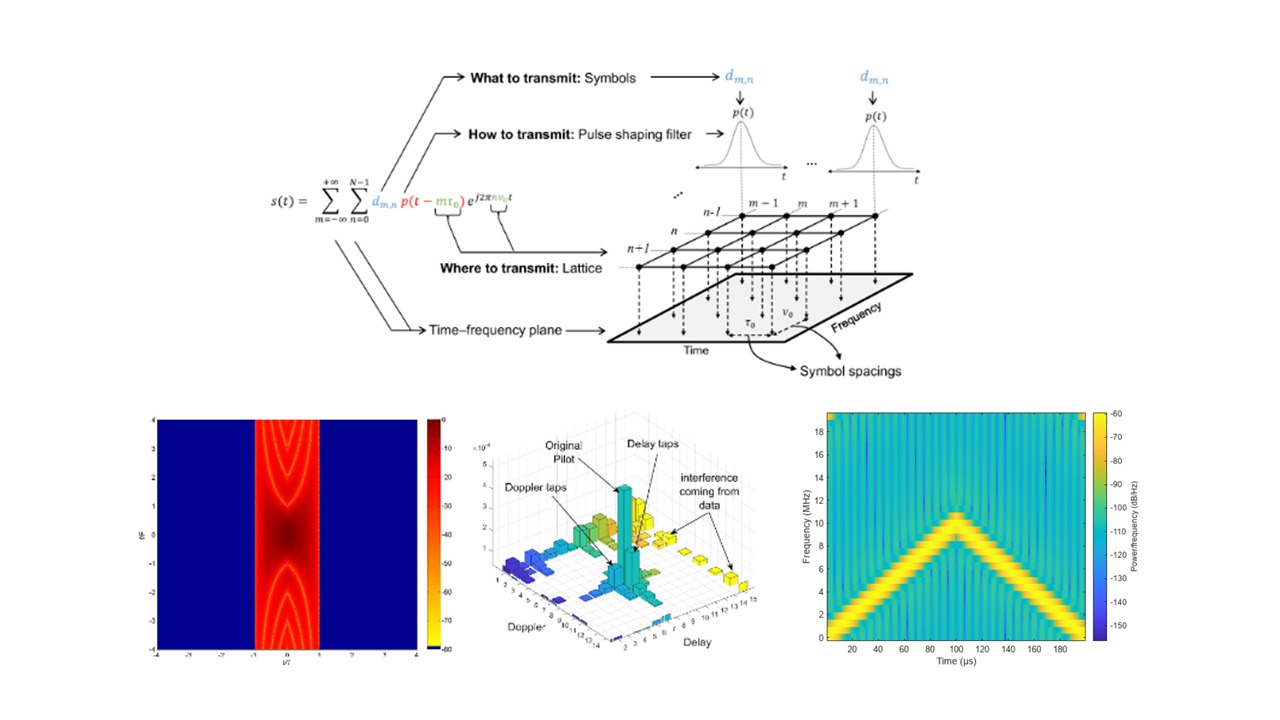
Efficient management of multi-dimensional resources has gained new aspects as inevitable results of the overlapping and coexistence of many communication systems. New waveforms approaches exploiting the complementary features of multi-dimensional resources emerge to be a tempting solution to break the bottleneck in the physical layer toward heterogeneous networks. In this context, novel waveform designs to fulfill the requirements of heterogeneous networks constitute our main research interests. Toward this ultimate point, our scope ranges from the fundamental properties of the waveforms (e.g., pulse shapes, orthogonality, nonorthogonality, time-frequency lattice, delay-Doppler-angular resolution) to the frame structures in the transmission. We investigate not only waveform itself in time-frequency in terms of channel adaptation and flexibility, but also cross relations between waveforms like signal separability regarding their suitability to next-generation networks. Moreover, we investigate 2D and 3D modulation domains for waveform design like OTFS (2D). Additionally, considering practical systems, we focus on their impacts on the other topics in the physical layer (e.g. PAPR, equalization, channel estimation, out-of-band radiation) and MAC layer (e.g. scheduling), since they essentially affect the transmitter and receiver algorithms.
Our current efforts for next-generation wireless technologies:
- Hybrid waveform design for beyond 5G,
- Ultra-flexible and scalable OFDM-based waveform design,
- Waveform design for the robustness to doubly dispersive channels,
- Waveform design for integrated sensing and communication,
- Waveform design for multi-point to multi-point networks.
2. Cognitive Radio and Software Defined Radio
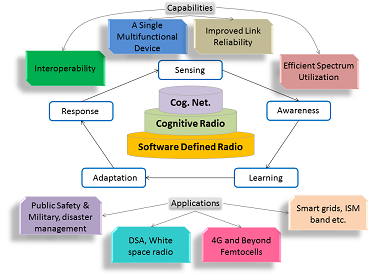
Demands for more bandwidth requiring applications and increasing number of wireless devices caused inevitable evolution of wireless systems. However, the spectrum is still limited and spectral crowd pushes more efficient spectrum usage. This brought the idea of cognitive radio (CR) which has spectrum sensing, awareness of its surroundings, learning and self-adapting capabilities to maintain communication in an opportunistic manner. Development of such systems is encouraged by regulatory agencies such as Federal Communications Commission (FCC) in United States, to have licensed spectrum become available to the unlicensed/secondary users to increase spectral efficiency. As WCSP Group, we are interested in developing CR and software defined radio (SDR) algorithms to enable future radios to have advanced capabilities and designing CR test beds in our well equipped laboratory to test performance of the proposed techniques in practical cases.
Related links can be found here.
Current Efforts
- Dynamic spectrum access
- Spectrum sensing and spectrum shaping
- Signal intelligence (SigINT) and identification
- Channel awareness and real-time channel parameters estimation
- User awareness and user context estimation
- Mobility modeling and estimation
- Adaptive waveform and signal design
- Cognitive radio measurements and metrics design
3. Digital baseband signal processing algorithm development for future wireless communication systems
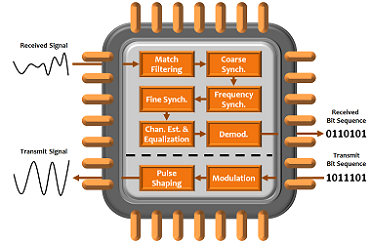
Advanced digital baseband algorithm designs can improve the performance of the communication system, reduce the computational complexity and power consumption, extend the range of communication, and increase the data rates. Actually, the enabling factors for current developments and future projections in wireless communications are the flexibility and capability in digital signal processing (DSP). In other words, the requirement for the efficient design can vary depending on the application and type of the network. as well as the requirements can change in time for a given application or network depending on the user context and channel conditions. Therefore, adaptive, channel aware, and user aware algorithm designs are critical for the next generation systems that will mostly be possible with digital baseband processing advances.
Current Efforts
- Channel estimation, tracking and equalization
- Time, frequency, and phase synchronization
- Soft information generation
- Detection and estimation of various channel, signal, and user parameters
- Interference cancellation and multi-user detection
- Blind receiver algorithm designs (Blind synchronization, channel estimation, equalization)
- Blind modulation order and type detection
- Blind signal identification
4. Testing, Measurement, and Modeling
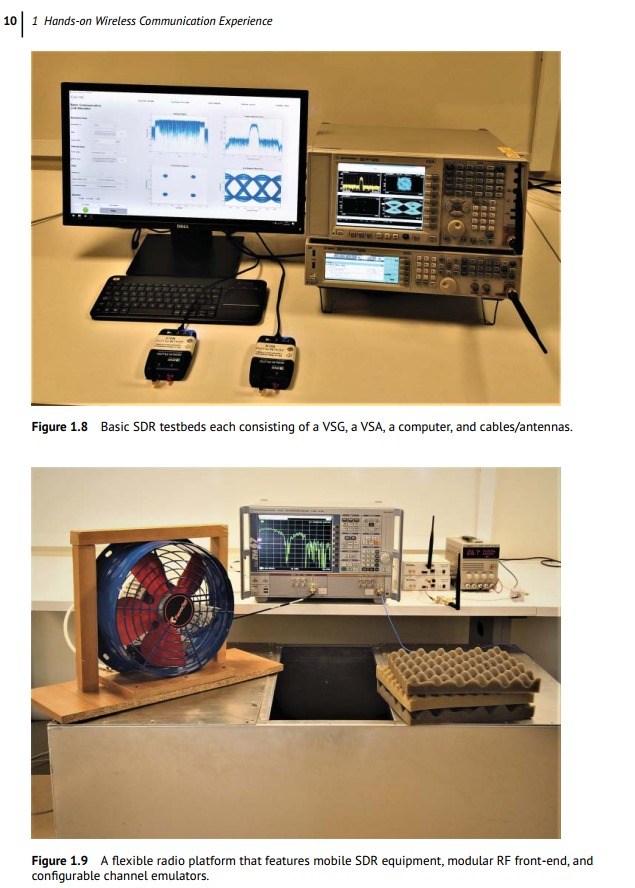
Testing, measuring, and verification of next generation wireless devices, sub-systems, and networks are very challenging. The challenge is not only in hardware (requiring wideband signal analysis and generation capabilities as well as high speed ADC/DAC and fast processing capabilities), but also in software (requiring additional test vectors, performance metrics, user interface, etc.). The next generation tools should have the ability to process wide variety of waveforms and should be equipped with autonomous synchronization and detection capabilities. In addition, understanding the transient behaviors of the transmitted and received signals is crucial. We are interested in testing, measuring, and modeling the components, devices, wireless channel, RF front-end subsystem, interference, network of radios, etc.
Related last projects can be found here.
Current Efforts
- Measurement and modeling large and small scale characteristics of communications channels
- RF front-end and its impact in the overall system in terms of temporal characteristics (like PARR, CCDF), spectral characteristics (like ACPR, out-of band interference, IMP), in-band interference, BER, etc.
- Interference modeling and measurements
- Spectrum usage measurements and modeling
- Cognitive radio measurements and modeling
5. Artificial Intelligence / Machine Learning Applications in Wireless Communications
The increasing diversity in applications of wireless communications and their requirements necessitates an exceedingly heterogeneous and flexible network. Such as the network needs to be able to adapt to the varying requirements, device capabilities, operating environments, and other dynamic parameters. In order to optimize the network’s performance, it is critical to embed intelligence in the various nodes. In line with this, artificial intelligence (AI)/machine learning (ML) are being touted as essential 6G enablers. The application of AI becomes imperative in cases where the conventional model-based approaches are either unavailable or become intractable due to the richness of the environment and/or operational parameters. In such scenarios, it is advisable to incorporate the domain knowledge from classical wireless systems/literature into AI/ML tools as apriori information and solve these new and complex problems.
Our Focus
- Prediction of spectrum holes and resource allocation
- Physical layer security in cognitive radio networks
- Detection/classification of multiple RF impairments from radio signals
- Blind detection of wireless signal
- Channel modeling and estimation
- Optimization of channel control mechanisms

6. Integrated Sensing and Communication
Integrated sensing and communication (ISAC) is one of the emerging technologies for 5G and beyond networks. With the ever-growing spectrum scarcity and futuristic applications which depends both on sensing and communication, ISAC is becoming an important and crucial technology. The constant evolution of current wireless networks paves the way for cutting edge applications including autonomous driving, air traffic control (ATC), geophysical monitoring, traffic surveillance, and security applications that require sensing in addition to conventional communication. Additionally, these bandwidth-hungry wireless applications require carrier frequencies that are typically reserved for radar systems. Therefore, the scientific community is compelled to revamp classical communication architecture by integrating radar sensing into it. Radar and communication systems operate in fundamentally distinct ways. Radar illuminates the intended target by transmitting a known signal towards it and processes the received echoes to extract useful information about the target such as distance, velocity, height, azimuth, and other physical properties. Contrarily, information exchange takes place between cooperative transceivers in classical communication systems.
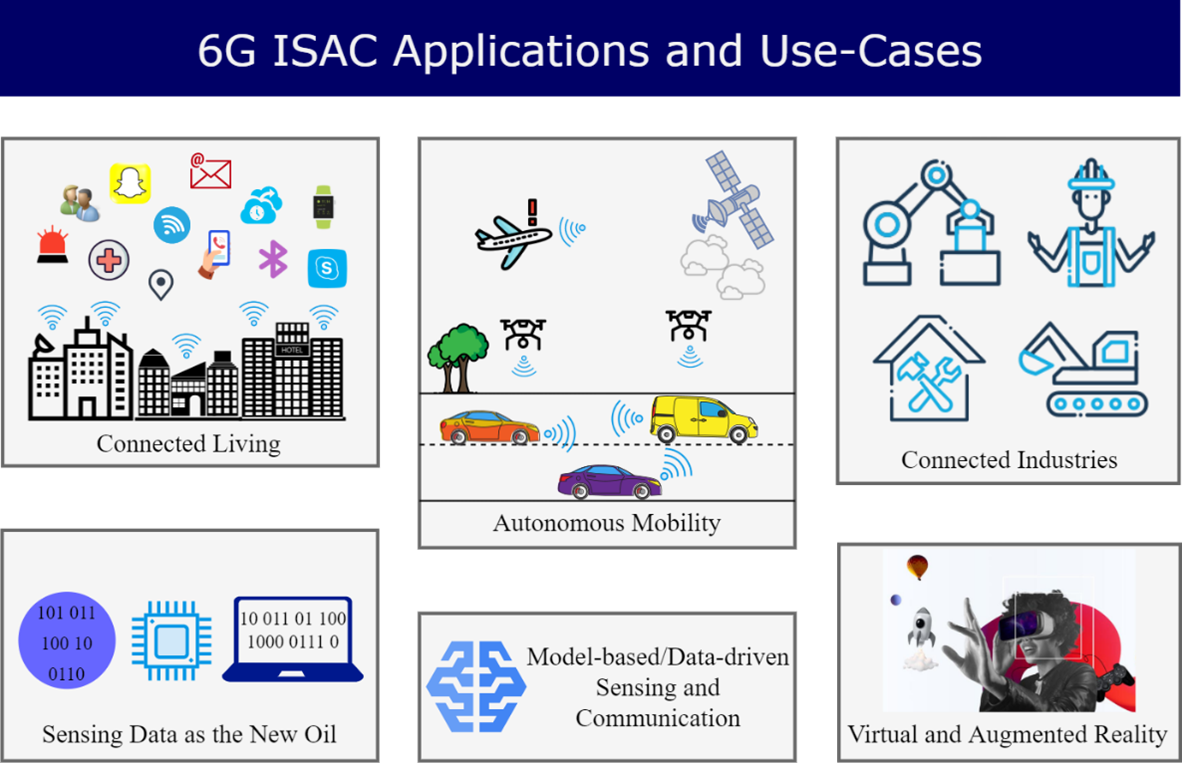
Challenges and Opportunities:
- Waveform design/frame design for ISAC
- Interference management for radar and communication coexistence
- Signal processing techniques/algorithms for ISAC
- THz sensing and communication
- Machine learning for ISAC
- Channel models for ISAC
7. PHY / Cross-Layer Security
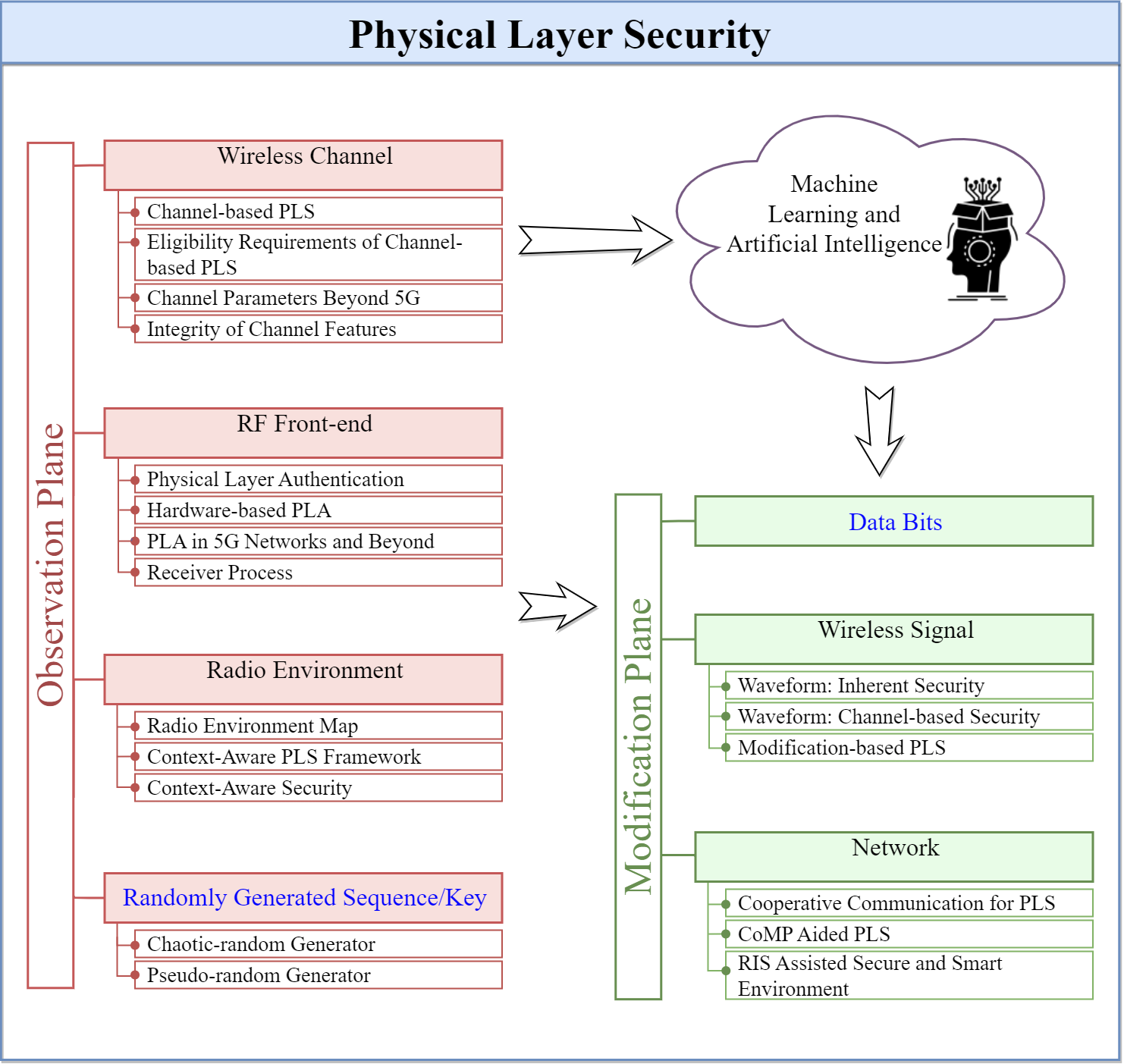
Fifth generation (5G) and beyond wireless systems signaled a paradigm shift in wireless networks by introducing a variety of services satisfying different performance requirements rather than concentrating on increasing the achievable data rates. Given the diverse use cases in 5G and beyond wireless networks, the wireless systems will not only be used for communication but also to acquire information about the environment and/or users using sensing techniques to improve the overall network performance. However, the very fact that radio signals can be used to gain environmental awareness renders them prone to being eavesdropped on, manipulated, jammed, and exploited by malicious nodes/entities. Although commonly utilized, conventional cryptographic security is not designed for networks with the diversity of capabilities as seen in the current (or future) wireless systems since it requires certain computational capabilities at all nodes. As such, these methods are unable to scale well with the decentralized and heterogeneous networks that are becoming more prevalent. On the other hand, physical layer security (PLS) offers a potential supplementary solution to guarantee the confidentiality, integrity, authenticity, and availability of communications by leveraging the dynamic aspects of the wireless environment.
Current Efforts
- Physical layer security for 5G and beyond
- Cognitive/Intelligent security
- Cross-layer and hybrid security
- Radio environment mapping (REM) security
- Physical layer authentication
- Context-aware security frameworks
- Artificial-intelligent (AI) based security solutions
- Reconfigurable Intelligent Surfaces (RIS) assisted security solutions
8. Multiple accessing, scheduling, and radio resource management (RRM)
Multiple access is an approach where multiple users use the resources either orthogonally or non-orthogonally in the most effective manner. Different significant approaches to be considered in this area such as how to allocate the resources, what are the most effective scheduling approaches can we use, what is the best mechanism to deal with multi-user interference, and finally how can we achieve a good performance metric. Those approaches can be considered in 6G and beyond networks are called next generation multiple access (NGMA) such as rate splitting multiple access (RSMA).
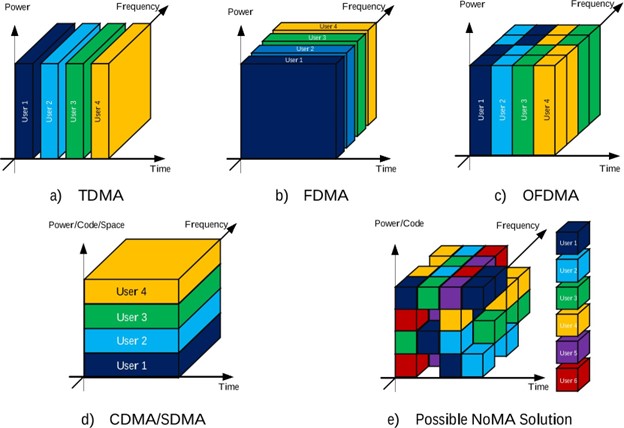
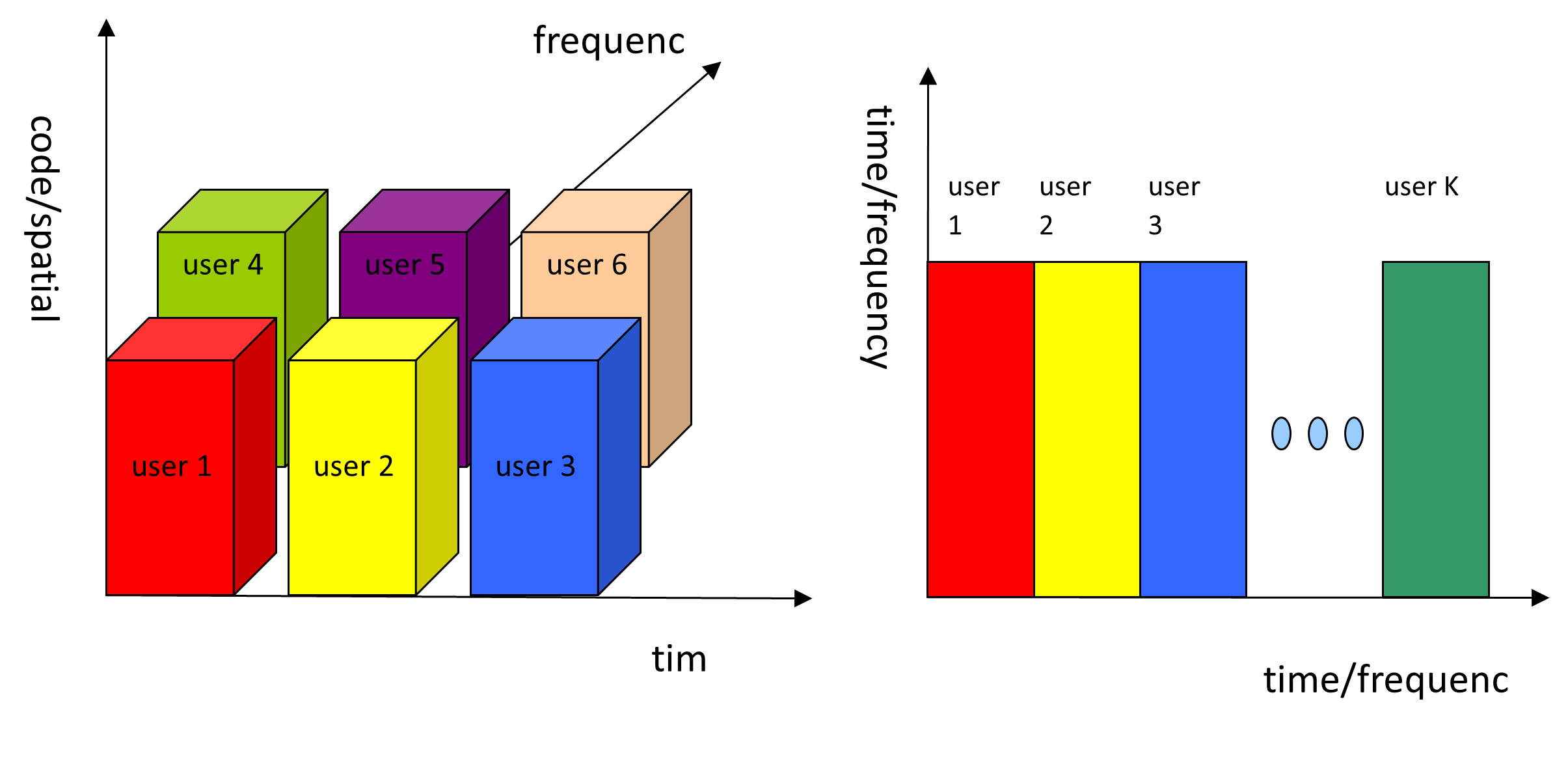
Possible Direction areas
1. NGMA to achieve the fundamental limits of wireless networks.
2. NGMA for multiuser/multi cell multi antenna networks.
3. NGMA based robust interference management.
4. NGMA in MU MIMO, CoMP, massive MIMO, millimetre wave MIMO, relay, cognitive radio, coded caching, physical layer security, cooperative communications.
5. Coding and Modulation for NGMA.
6. Cross layer design, optimization, and performance analysis of NGMA.
7. Implementation and standardization of NGMA.
8. NGMA in B5G services and applications such as enhanced eMBB enhanced URLLC, enhanced MTC, massive MTC, massive IoT, V2X, cellular, UAV and satellite networks, wireless powered communications, integrated communications, and sensing, etc.
9. Radio resource management for green wireless systems.
10. Radio resource management in heterogeneous and small-cell networks.
11. Quality-of-service and resource management.
9. Non-Terrestrial Networks (NTNs)
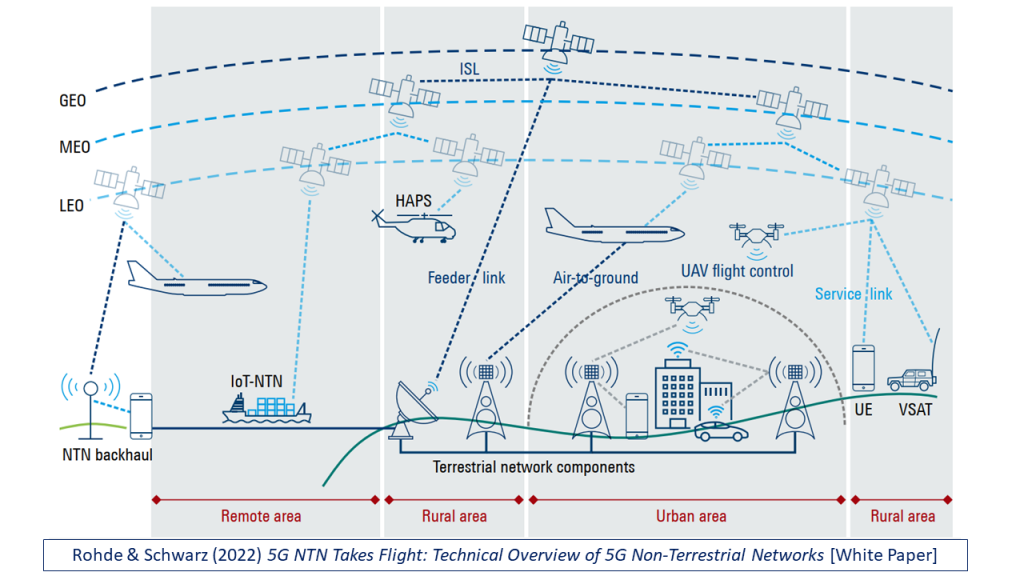
NTNs have become increasingly popular over the last few years due to the better propagation characteristics of the wireless channel and higher line-of-sight (LoS) probability. As such, they are of particular interest in terms of improving coverage and support high mobility. The coverage aspect is especially relevant to otherwise remote or underserved areas where terrestrial networks are economically nonviable. Larger coverage footprint also has the potential to support high mobility scenarios such as highway and high-speed trains.
NTNs, in terms of 3GPP standardization, encompass aerial communication nodes above 8km in altitude. However, in generalized sense, drones/unmanned aerial vehicles (UAVs) can also be considered as a part of NTNs (in 3GPP they are addressed separately). The NTN paradigm introduces new challenges to the wireless networks including large propagation delay (geostationary satellites), high mobility and Doppler (low-Earth orbit), synchronization and access delay etc., which require extensive analysis and novel solutions.
Our Focus
- Link budgeting and handover analysis
- Interference analysis and mitigation
- Synchronization and initial access
- Waveform design, particularly for high Doppler and power-efficiency
- Physical layer security
10. Interference Management
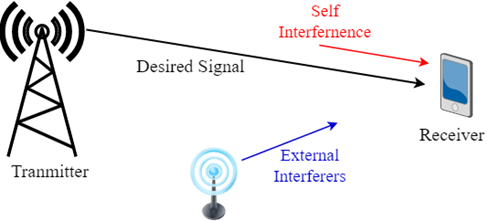
Interference is the fundamental nature of the wireless communication systems due to the existence of multiple transmissions over a common propagation medium (air, in this context). As the wireless networks become more heterogeneous in nature due to the inclusion of varieties of scenarios and use cases stemming from societal needs, the interference problem gets more serious and imposes a primary challenge on the realization of reliable and spectrally efficient wireless systems. In most existing wireless systems, interference has been dealt with by coordinating users to orthogonalize their transmissions in time, frequency, or code or by increasing the transmission power and treating each other’s interference as noise. Sophisticated receiver designs, such as multiuser detection, have been also considered for interference suppression under various settings. Apart from interference arising from transmissions of other users, self-interference due to undesirable propagation channel condition is becoming increasingly critical as well. In this regard, waveform design-based approaches have been widely studied. In recent years, a paradigm shift on dealing with the interference problem has been observed. In addition to the traditional approaches, there is also a focus on how to intelligently exploit the knowledge and/or the structure of interference to improve the reliability, throughput, spectral, and energy efficiency of wireless communication systems.
Our Focus
- Interference analysis and modeling
- Interference mitigation and cancellation techniques
- Interference exploitation
- Interference-free coexistence mechanisms
11. Multi-antenna systems (MIMO, RIS, CoMP)
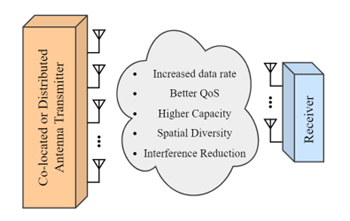
Regarded as a breakthrough in wireless communication system design, multiple antenna systems fuel the ever-increasing data rate, a better quality of service, and higher network capacity in contrast to single antenna systems. The ultimate gain of multiple antenna systems relies on the use of space diversity where the same information-bearing signal is transmitted/received via different antennas where the maximum gain can be achieved when the fading occurring in the channel is independent (or low correlated). In the receiver, diversity gain can be achieved by combining the redundant signals arriving via independent (or lowly correlated) channels. Multiple antenna systems include a variety of techniques capable of not only increasing the reliability of the communication and impressively the channel capacity but also increasing the link quality and leading to appreciable interference reduction. Multiple-input multiple-output (MIMO) has existed for a long time. Yet, related systems have relatively appeared under different names, such as distributed antenna systems (DAS), coordinated multipoint (CoMP), Cooperative MIMO, Distributed MIMO, and Reconfigurable intelligent surface (RIS). MIMO system is defined as a signal transmission technology that uses multiple antennas at both the transmitter and receiver to perform spatial multiplexing and improve communication quality and spectral efficiency. However, CoMP technology sends and receives signals from multiple sectors or cells to a given user. By coordinating transmission among multiple cells, interference from other cells can be reduced.
Our Focus
- MIMO channel estimation
- Beam acquisition/tracking
- Synchronization in multiple transmission systems
12. Millimeter-wave/Terahertz (THz) frequency bands
Terahertz (THz) Frequency Bands
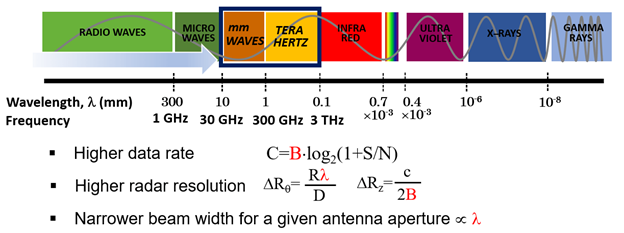
The issue of spectrum scarcity in 4G cellular communication systems has pushed 5G towards using millimeter-wave frequency bands. Moreover, applications such as virtual/augmented reality (AR/VR), personal assistance, digital twins, autonomous vehicles, internet of things (IoT), etc., that require high-rate communication and high-resolution sensing demand migration towards even higher carrier frequencies such as terahertz (THz). However, these higher frequencies have their own challenges compared to low frequencies. High frequencies particularly THz frequencies inherently suffer from short communication ranges owing to high path loss which is justified by Friis free space power equation. Other factors such as reflection losses, intermittent availability of LOS paths, and molecular absorption effect also contribute to the short communication range at high frequencies. To extend the small footprint offered by THz frequencies, attenuation losses are countered by concentrating the transmitted signal energy in high-power, highly directional narrow beams. However, these directional point-to-point THz links are susceptible to blockages and can easily be disrupted by micro-movement caused by a user or any object in the environment. Therefore, sophisticated mechanisms must be developed to counter blockages at these frequencies. Furthermore, the potential of certain phenomena peculiar to higher frequencies such as reflection and molecular absorption losses must be investigated to be used for sensing.
Our Focus
- Advanced signal processing algorithms for integrated sensing and communications (ISAC) at mm-Wave/THz frequency bands.
- Non-Line-of-sight communication and sensing at sub-THz frequency bands.
- Waveform design and modulation techniques for beyond 5G communication systems.
- MIMO/beamforming techniques/challenges at higher carrier frequencies.
- Channel Modelling and parameter estimation at sub-THz frequencies.



